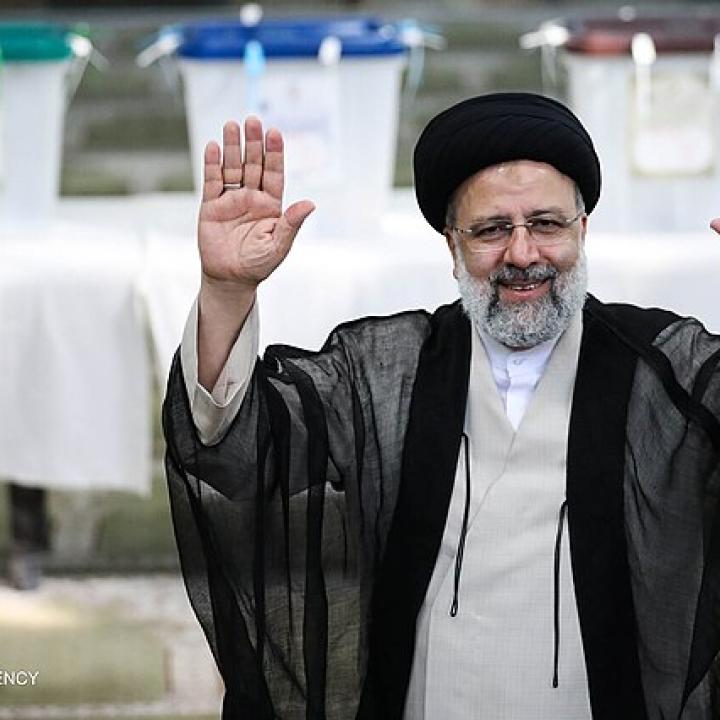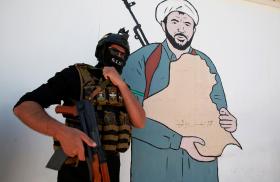
- Policy Analysis
- Fikra Forum
How Longstanding Iranian Disinformation Tactics Target Protests

After decades of global and domestic disinformation campaigns, the Iranian regime has only doubled down on media manipulation in response to recent protests.
This week, Tehran released its accusations against the two journalists-- Niloofar Hamedi and Elaheh Mohammadi—who are being detained in Evin prison. The Iranian Ministry of Intelligence and intelligence wing of the IRGC issued a joint release accusing the two journalists of allowing the CIA to organize their reporting and “laying the groundwork for the intensification of external pressures.” The accusations themselves are absurd, but help to highlight the narratives Tehran consistently turns to in order to delegitimize and downplay dissent within the country.
The Islamic Republic of Iran (IRI) frequently represents itself as a major target and victim of political conspiracy and anti-Iran disinformation campaigns. However, these repeated claims and the contexts in which they are made serve to prove that Iran itself is a hub for fake news and disinformation, especially those targeting other states and its own society. Since its establishment in 1979, the IRI has consistently subjected its own people to media manipulation, and Iranian state media—including the Islamic Republic of Iran Broadcasting (IRIB) service, which essentially has a media monopoly—has functioned as a weapon of mass suppression of information.
Right now, both state media outlets in Iran and Persian diaspora platforms around the globe have been falsely representing the current mass protests in peripheral regions such as Kurdistan, Khuzestan, and Baluchistan as “separatist” in nature. This narrative has allowed the regime to discredit and divide the protestors and to justify its use of extreme violence in suppressing them.
As has been the case in the past, spreading such fake news about internal protests—and labeling them as “separatist activities”—represents an attempt by the regime to destroy any manifestations of nascent unity or solidarity among protestors and the Iranian public at large. Specifically in the central regions and provinces of Iran—populated mainly by the Persian Iranians—the regime hopes to sway public opinion with the argument that Iran’s territorial integrity is endangered.
In the absence of freedom of the press, critical assessments of the information distributed by state media are a difficult task. According to the 2022 World Press Freedom Index of Reporters Without Borders, Iran is among the world’s ten worst countries for press freedom and “one of the most repressive ones for journalists.” However, their most recent coverage of these mass protests against repression have made more obvious just how prevalent and insidious these narratives are.
A History of Disinformation
Iran’s disinformation strategy is as old as the regime itself. As an ideological apparatus of the regime, state media institutions like the IRIB have served to produce and impose the authority and values of the regime on the Iranian people. Decades of this propaganda has naturally raised the Iranian public’s antipathy toward the state’s all-encompassing strategy, with some Iranians viewing it as a “national shame.”
In the age of digital and social media, the creation of thousands of fake websites and fake Facebook, Instagram, and Twitter accounts is another tool with which the IRI has spread fake news and disinformation internationally—a tool which IRI officials openly admit and discuss using. For example, Ruhollah Momen Nasab—the former head of the Digital Media Centre within the IRI’s Ministry of Culture and Islamic Guidance, an outspoken opponent of free internet access and a staunch supporter of the restrictive “Law for the Protection of Cyberspace Users”—has proudly referred to Iran’s disinformation network as an element of psychological warfare. IRI officials have even boasted of the development of “cyber battalions” to manipulate the global narratives on Twitter and other platforms.
Regarding its domestic opponents, the IRI has conducted a similar campaign of psychological warfare. The IRIB, for example, takes advantage of a vast network of security, intelligence, military, and judicial organizations” to facilitate the “silencing, shaming, demonizing, vilifying, intimidating, punishing, and even torturing” of internal opponents, according to a report from the International Federation for Human Rights.
Indeed, the IRIB closely collaborates with the Ministry of Intelligence and the Islamic Revolutionary Guard Corps, broadcasting the likely coerced confessions of at least 355 people. While targets of the IRI’s disinformation are diverse, the main goal is to control public opinion—pitting groups against each other and tarnishing the reputations of activists and protesters.
The regime’s hate and disinformation campaigns especially villainize minority communities, including Iran’s Arabs, Azeris, Baha’i, Baluchis, Kurds, and Turkmens. In a recent example, four suspected members or sympathizers of Komala—a leftist Kurdish political party—were labelled in the media as Israel-affiliated terrorists in August despite little evidencel.
Over time, the regime’s targeting strategy has institutionalized chronic racism in the public and a phobia towards the democratic demands of non-Persian, non-Shia religious and ethnic groups. This phobia for non-Persian groups runs so deep, even anti-regime media outlets in the Persian diaspora tend to employ it, too, targeting Kurdish commentators and activists, for example, with unfounded questions about separatist agendas and outside influencers. Unfortunately, such disinformation campaigns and racist rhetoric have only worsened during the recent wave of protests across Iran.
Disinformation and Today’s Protests
By the second week of protests, it became clear that the regime was employing disinformation strategies online to try to manipulate the uprising into an armed revolt, a shift which would justify further violence by the IRI and cement regime support. Across social media, fake accounts and state-run outlets disseminated fake news and videos apparently showing Kurdish armed groups—namely the Peshmerga—among protesters. Other videos explicitly showed Iranian security forces dressed as Peshmerga and harassing the locals in Kurdish cities. And despite the regime’s decades-long campaign to destroy traces of Kurdish resistance and militarize the Kurdistan province, the regime has now actually attempted to force the real Kurdish Peshmerga from their remote bases in Iraqi Kurdistan to urban areas in order to join the protests, giving the impression that protestors have turned to violence and that the regime must respond with full, brutal force.
While disinformation runs rampant, accurate reporting of the protests and the regime’s violent crackdown has been hard to come by, especially with the IRI widely disrupting internet access across the country only one week in and due to its systemic targeting of independent journalists reporting on the protests. These massive internet blackouts have prevented protestors from voicing their dissent, coordinating their activities, or sharing their experiences at the hands of the IRGC and other regime forces.
Although the death of Jina “Mahsa” Amini on September 16 initially sparked a sense of solidarity among the Iranian people against the regime, the IRI has only ramped up its disinformation and fake news strategies in response, directly challenging the public’s solidarity. If the regime continues to successfully label the uprisings as a separatist revolt, preying on the already-fragile tensions between Persian and non-Persian communities while suppressing any real information in public discourse, the unprecedented unity observed during this wave of protests will be put to the ultimate test. In the days and weeks ahead, the Iranian people must prove that their unity is enduring, not temporary.

